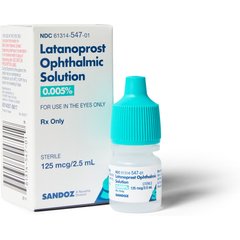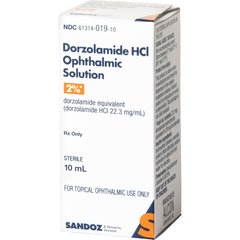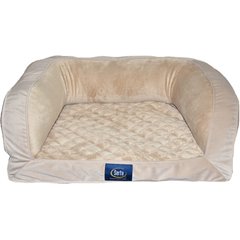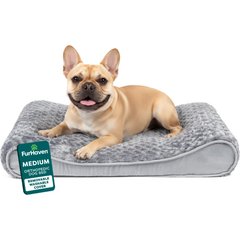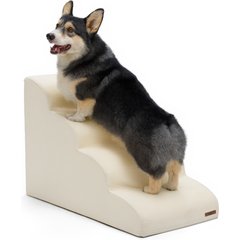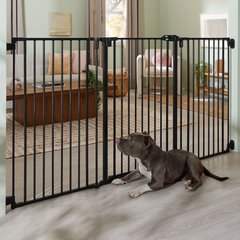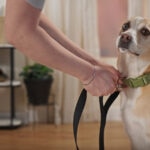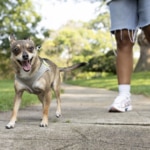What Is Glaucoma in Dogs? What Are the Signs?
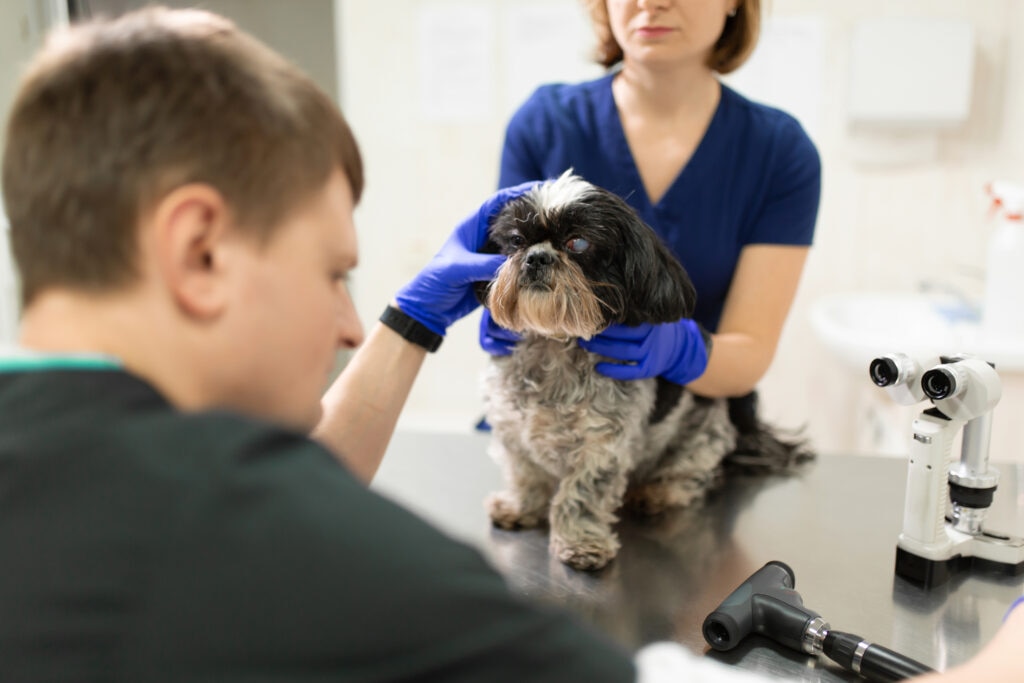
Photo by Kateryna Kukota/iStock/Getty Images Plus
Glaucoma in dogs is a serious medical condition that can cause pain and permanent vision loss if left untreated. Some dogs develop cataracts suddenly, while others show subtle changes over time.
Spotting the warning signs early and getting prompt veterinary care can make all the difference.
Here’s everything you need to know about canine glaucoma: what causes it, how veterinarians manage it, and steps you can take to protect your dog’s eye health and keep them comfortable.
Key Takeaways
- Glaucoma is an eye disease that happens when fluid builds up in the eye, creating pressure that can lead to blindness. Early detection is crucial to protect vision.
- Early signs of glaucoma can be subtle, like squinting, red eyes, or cloudiness, but more obvious symptoms include bulging eyes, vision problems, and sudden blindness.
- While glaucoma can’t be cured, your veterinarian can help you and your dog manage it with medications, pain relief, and sometimes surgery.
- Dogs can still live happy, comfortable lives with glaucoma if they get proper treatment and home support. Simple changes like ramps, nonslip rugs, and night-lights can help dogs with glaucoma feel safe and more confident.
What Is Glaucoma in Dogs?
Glaucoma is an eye disease that happens when fluid (aqueous humor) builds up inside the eye, creating too much pressure.
Normally, this fluid is being constantly made and drained to keep the eye healthy and maintain normal intraocular pressure (IOP). But when the drainage system gets blocked or doesn’t work properly, fluid collects, and pressure rises.
That extra pressure damages the optic nerve (the part of the eye that carries signals to the brain) and can lead to a painful partial or complete blindness if it’s not caught early.
Glaucoma is the leading cause of blindness in dogs, says Sam Varon, DVM, owner of Broadway Veterinary Hospital in Sacramento, California. It’s estimated that glaucoma affects about 1.7% of dogs in North America—and some breeds are at much higher risk than others.
Basset Hounds, Beagles, and Chow Chows are genetically predisposed to glaucoma, which means pet parents with these pups should be especially watchful.
If you catch it early, you can give your dog the best chance at keeping their vision.
What Are the Signs of Glaucoma in Dogs?
Glaucoma can be tricky to spot, especially in the early stages. But there are some key signs that something isn’t right with your dog’s eyes.
The most common symptoms of glaucoma in dogs include:
- Redness in the white of the eye
- Cloudy or bluish-looking cornea (clear surface of the eye)
- One eye appearing larger or bulging more than the other
- Squinting or closing the eye
- Excessive tearing
- Discharge
- Rubbing or pawing at the eye
- Bumping into things (change in vision)
- Restlessness or whining
- Sudden blindness (in severe cases)
If you notice any of these changes, especially if they come on suddenly, call your vet right away.
What Causes Glaucoma in Dogs?
There are a few different forms of dog glaucoma, and each has its own underlying causes.
Inherited (primary) glaucoma
In genetically predisposed dogs, the eye often has a narrow drainage angle restricting fluid from flowing out of the eye.
When the fluid can’t drain properly, fluid and pressure build up, leading to pain, discomfort, and the diagnosis of glaucoma, says Marc Smith, DVM, owner of Natchez Trace Veterinary Services in Nashville, Tennessee.
In general, purebred dogs tend to have a higher risk of primary glaucoma than mixed breeds, Dr. Varon says. Certain breeds—like Beagles, Chow Chows, Basset Hounds, Huskies, and French Bulldogs—are even more prone to primary glaucoma. Once it starts, it often affects both eyes.
Secondary glaucoma
In secondary glaucoma, which Dr. Smith says is the most common type, another eye problem blocks or disrupts fluid flow. Common culprits include inflammation (from uveitis), trauma, tumors, or advanced cataracts that cloud the lens and affect the way your dog’s eyes drain.
Occasionally, the lens of the eye, which redirects light, can move out of its proper position (called lens luxation) and physically block or plug the angle, leading to glaucoma, says Dr. Smith.
Age-related changes
Just like other parts of the body, the eye’s structures can weaken with age, making it harder for fluid to drain correctly.
That’s why glaucoma tends to show up more often in older dogs.
How Do Veterinarians Manage Glaucoma in Dogs?
Unfortunately, there’s no cure for glaucoma, but vets can help manage the condition. The main goals of treatment are to relieve pain and slow vision loss.
If your vet suspects glaucoma, they’ll first use a tonometer—a small device that measures eye pressure—to diagnose it.
Once diagnosed, treatment may include some or all the following, depending on the severity of the condition:
- Medications: Some medications can help reduce eye pressure and slow progression of the disease. For example, latanoprost or dorzolamide are glaucoma eye drops for dogs that can either improve fluid drainage or decrease fluid production, says Dr. Smith.
Recommended Products
- Pain management: Glaucoma can be very uncomfortable, so vets often prescribe pain relief or anti-inflammatory medications (by mouth or eye drops) to keep your dog comfortable while they undergo other treatments.
- Surgery: In more severe cases, your dog may need surgery. This might include procedures to improve fluid drainage or laser therapy to reduce pressure, Dr. Varon says. In extreme cases, like if your dog has already lost their vision or they’re in a lot of painthat can’t be managed with medication, your vet may recommend removing the eye (enucleation).
How Can I Help My Dog Feel More Comfortable?
It’s worth noting that even with treatment, glaucoma often leads to blindness over time, but dogs can still live full, happy lives with proper management.
Here are some ways you can keep your dog more comfortable during treatment and beyond.
- Choose supportive bedding: Orthopedic dog beds, like the Serta Bolster Dog Bed, support stiff joints and relieve pressure points, which is especially important for older dogs or those who move less because of their vision. A low-profile bed, like the FurHaven Luxe Lounger, can also make it easier for your dog to step in and out without straining.
Recommended Products
- Add ramps or stairs: Ramps or stairs, like the Lesure Dog Stairs, make it easier for vision-impaired dogs to get onto the bed or couch.
Recommended Product
- Keep their environment consistent: Avoid rearranging furniture so your dog can remember the layout, says Dr. Smith. Make sure food, water, and their favorite toys are always in the same spot and easy to access.
- Block potential dangers: For example, you may want to use dog gates, like the Frisco Configurable Gate, to block off stairs or confusing areas if your dog has trouble seeing.
Recommended Product
- Provide night-lights: Motion-sensor lights can help dogs with partial vision navigate in low light.
- Use nonslip rugs or mats: Dogs with limited vision are more likely to slip on hardwood or tile. Placing rugs or yoga mats on slippery floors can give them more traction and improve their confidence.
- Handle your dog gently: Glaucoma can be painful, so gently handling your dog, especially around the head and eyes, can help avoid discomfort, Dr. Varon says.
How Do I Prevent Glaucoma in My Dog?
While you can’t always prevent glaucoma, especially the genetic form, you can lower the risk of complications and catch it early by keeping an eye out for changes and working closely with your vet.
Here are some ways to protect your dog’s eye health:
- Schedule regular vet visits: The best thing you can do is take your dog for routine eye exams, says Dr. Smith. This gives your vet a chance to spot changes and start early treatment before things become more serious.
- Protect their eyes from injury: Keep your dog away from rough play or hazards that can cause eye trauma, like sharp objects or low-hanging branches.
- Manage other eye conditions: Cataracts, inflammation, or injuries can all increase glaucoma risk, so treating them early is key.
- Watch for early warning signs at home: Squinting, redness, cloudy eyes, or sudden changes in behavior (like bumping into things) are always worth a call to the vet.
- Support overall health: A balanced diet, regular exercise, and properly managing health conditions like diabetes or high blood pressure can indirectly protect eye health.
FAQs About Glaucoma in Dogs
What can you do for dogs with glaucoma?
While glaucoma can’t be cured, you and your vet can help manage it and keep your dog comfortable. Treatment often includes medications to lower eye pressure, anti-inflammatory drugs, and, in some cases, surgery to relieve pain.
Can a dog live comfortably with glaucoma?
Absolutely! Even if glaucoma leads to vision loss, most dogs adjust remarkably well with a little extra support at home. Simple changes—like ramps, nonslip rugs, and consistent furniture placement—can make daily life easier for your dog.
What are early signs of glaucoma in dogs?
Early signs of glaucoma are often subtle. Your dog might squint, have red eyes, and/or seem sensitive to light. As pressure increases, you may notice bulging eyes or more obvious changes in vision, like bumping into things.
How long until glaucoma causes blindness in dogs?
There’s no set timeline—it depends on the type of glaucoma and how fast the pressure builds up. In some cases, glaucoma can cause blindness within hours or days of the first symptoms, but in other cases, it can take years.
